Marketing automation is evolving rapidly – and the frontier now is not just what automation you run, but how smart it is.
Enter HubSpot Custom LLM Workflow Actions capability: a game-changing way to integrate large language models (LLMs) directly into your workflows using the HubSpot platform. While you may already know about the Breeze AI agents from HubSpot’s 2025 release, this feature is technically distinct: Breeze offers pre-built agents for common tasks, whereas the Custom LLM workflow action gives you full flexibility to plug any supported LLM into your HubSpot workflows.
This article explores what it is, how it differs from other AI tools, how you can implement it, and most importantly what marketing-ops and business owners should consider to get ahead.
Table of Contents
1. What Are Custom LLM Workflow Actions in HubSpot Data Hub?
HubSpot Custom LLM Workflow Actions enables users of HubSpot (Marketing Hub, Sales Hub, Service Hub, Data Hub – all at Enterprise level) to integrate large language models from providers like OpenAI, Anthropic (Claude), Cohere, xAI (Grok), and Google (Gemini) directly into HubSpot workflows.(HubSpot Knowledge Base)
In practice, once you have your LLM API key and you’ve connected the provider in HubSpot, you add a “Use a custom LLM” action in a workflow. Then you configure the prompt, select the model, set parameters like temperature or reasoning effort, and you can output the LLM result to another workflow action – for example updating CRM records, sending a notification, triggering another automation.(HubSpot Knowledge Base)
2. How This Feature Differs from Breeze Agents and Typical AI Workflows
- Breeze Agents (which we have already covered): pre-built AI assistants inside HubSpot aimed at specific use-cases (e.g., content creation, qualification, support messaging).
- HubSpot Custom LLM Workflow Actions: user-driven – you pick the provider, build the prompt, control the output and tie it deeply into your workflow logic.
- Traditional AI workflow actions might have been limited to HubSpot’s built-in models or simple operations; this feature takes it further by exposing the full power of external LLMs, thereby giving you flexibility and customization.
Here’s the Clear comparison:
| Feature / Capability | Breeze AI Agents | Custom LLM Workflow Actions |
| Purpose | Pre-built assistants for common tasks (content, service replies, prospecting) | Fully customizable AI logic embedded inside workflows |
| Control Level | Low – HubSpot handles prompt logic | High – You design your own prompts & reasoning |
| Model Choice | Uses HubSpot-selected models | You choose model (OpenAI, Claude, Gemini, etc.) |
| Customization | Limited to agent settings | Unlimited — prompts, conditions, outputs, formatting |
| Best For | Quick wins, non-technical teams | Advanced workflows, marketing ops, RevOps, automation architects |
| Output Type | Task completion inside HubSpot UI | Dynamic values that update CRM fields or trigger workflows |
| Cost Profile | Included in paid plans (varies) | Based on external LLM usage (API metered) |
In short: if Breeze is “turn-key AI assistant”, then Custom LLM Workflow Actions are “build-your-own AI engine inside HubSpot”
3. Key Use Cases for Marketing & RevOps
Here are some high-impact use cases you can implement using Custom LLM Workflow Actions inside HubSpot Data Hub:
a. Automated Lead Scoring Commentary
When a lead enters the pipeline, send key field data into an LLM prompt (e.g., role, industry, web activity summary) and have the LLM output qualitative commentary like: “High potential for enterprise upsell based on X, Y, Z”. Use that as a property in HubSpot and trigger targeted workflows.
b. Conversational Email Personalization
Use the LLM to generate ultra-personalised email intros or content blocks based on CRM fields and recent engagement history, then push that variant into an email send action.
c. Support Ticket Triage & Routing
When a new ticket is created, send its description + account info to the LLM. Have it categorise urgency, sentiment, and recommended team (sales, service, product). Update the ticket routing accordingly.
d. Content Ideation & Metadata Generation
Use the workflow action to generate blog topic suggestions, meta descriptions, or social post copy from a dataset in your Data Hub (e.g., customer questions, search intents). Then use downstream actions to assign to the content team.
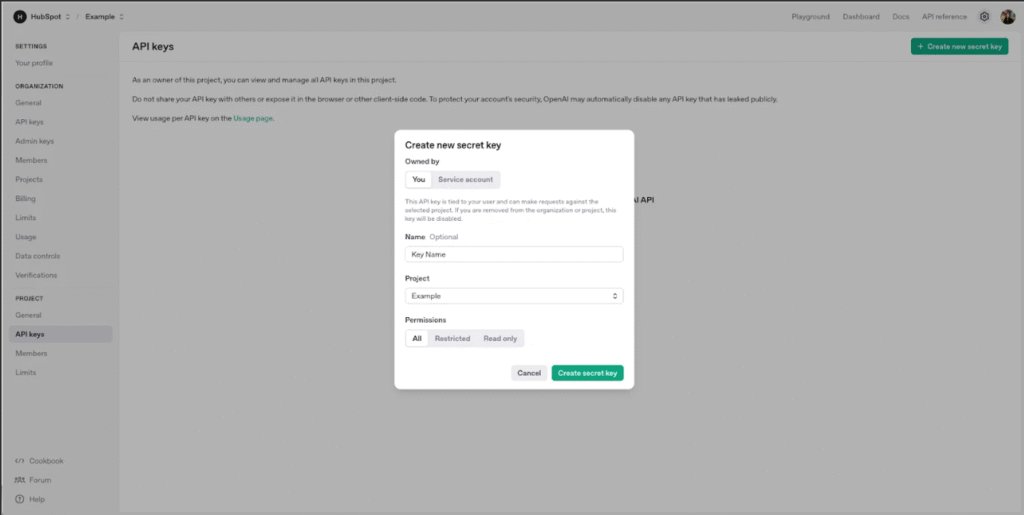
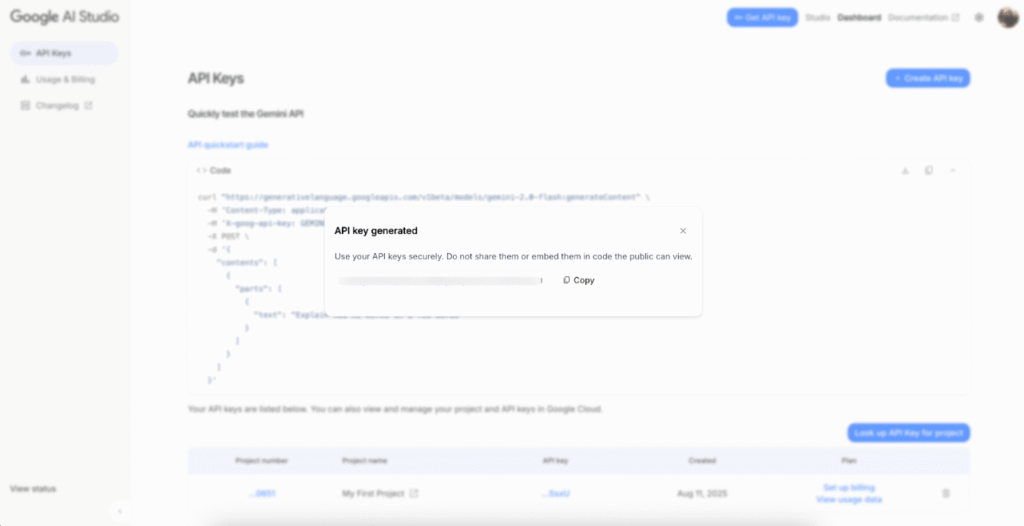


4. A Step-by-Step Implementation Walk-through
Here is a condensed workflow you can follow:
- Retrieve your LLM API key from your provider (OpenAI, Anthropic, etc.). (HubSpot Knowledge Base)
- In HubSpot navigate to: Automation → Workflows. Choose or create your workflow. (HubSpot Knowledge Base)
- Click the “+” to add an action. In the left panel expand AI and select “Use a custom LLM”. (HubSpot Knowledge Base)
- Select the AI provider from the dropdown and connect your API key. (HubSpot Knowledge Base)
- Choose your AI model. Enter your prompt message. Expand Advanced settings to adjust “Temperature” and “Reasoning effort” based on how creative or detailed you want the output. (HubSpot Knowledge Base)
- Save the action and configure downstream actions (e.g., update contact property, send alert).
- Test with sample data, monitor results, tweak prompts and settings for optimal output.
5. Visuals & Flow Reference
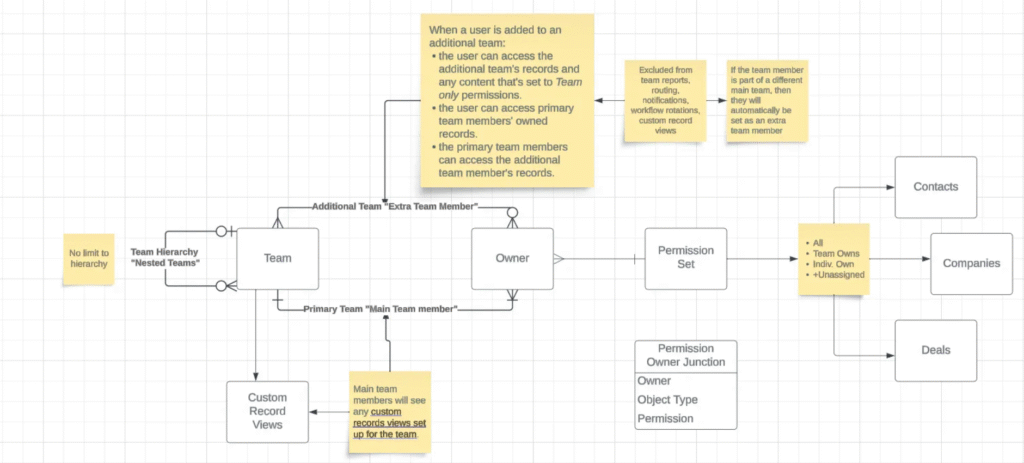
Img ref:https://airbyte.com/data-engineering-resources/create-llm-with-hubspot-data
6. Best-Practice Tips & Considerations
Prompt engineering matters: The quality of the LLM’s output depends heavily on how you craft the prompt. Be specific, include context from CRM fields, and test iteratively.
Data governance: Because you’re feeding potentially sensitive CRM or ticket data into an LLM, ensure compliance, data protection and secure API key storage.
Model choice & cost control: External LLMs often have variable cost and performance. Monitor usage, pick the right model (e.g., high reasoning effort only when needed).
Auditability: Use custom properties or logs to record LLM outputs so you can review decisions made by the AI and guard against unwanted surprises.
Maintain human-in-the-loop: Although automation is powerful, critical decisions should still have oversight. Use LLM outputs as suggestions, not automatic final actions unless fully validated.
Different from Breeze: As mentioned, these actions provide full customization and thus require deeper setup and strategy than pre-built agents.
Start small and scale: Pilot with one workflow, measure its impact (e.g., increase in email opens, lead conversion uplift, support resolution time), then expand across the organization.
7. Final Thoughts
If you’ve been searching for the next evolution in marketing automation, HubSpot Data Hub’s Custom LLM Workflow Actions represent a clear leap forward – bridging structured CRM data with the power of modern language models.
When done right, this capability can deliver personalized experiences, faster routing, smarter content generation, and more effective use of your HubSpot environment.
At Nidish Automation, we’re helping forward-looking teams integrate these advanced automations into their HubSpot stacks – aligning marketing, sales, and service operations under a unified data and intelligence strategy.
Ready to get started? [Book a consultation with our HubSpot specialists].

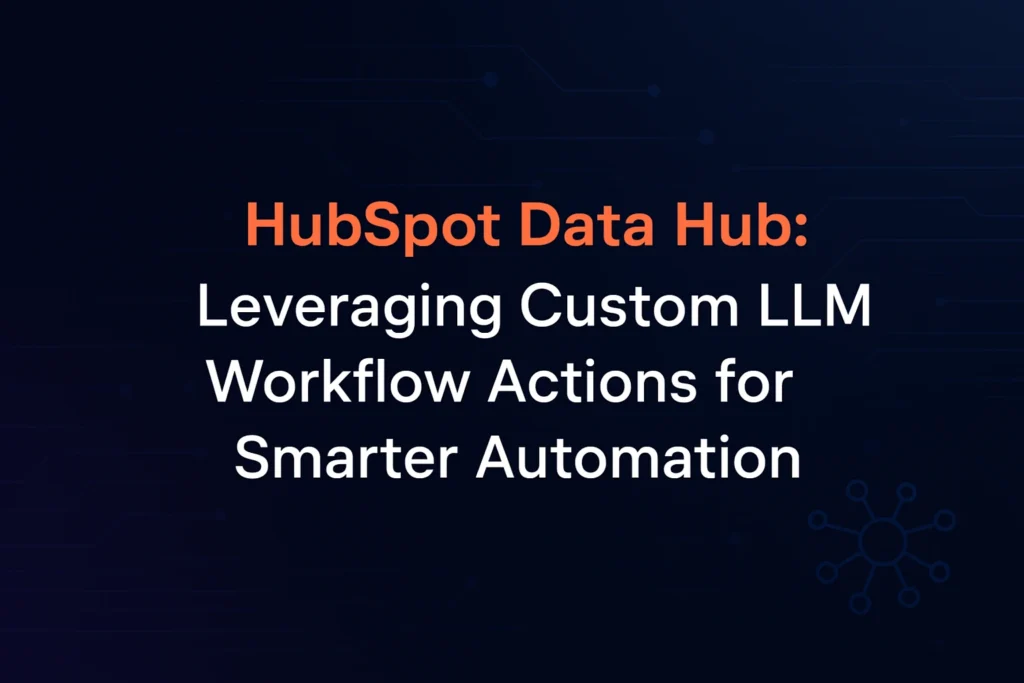

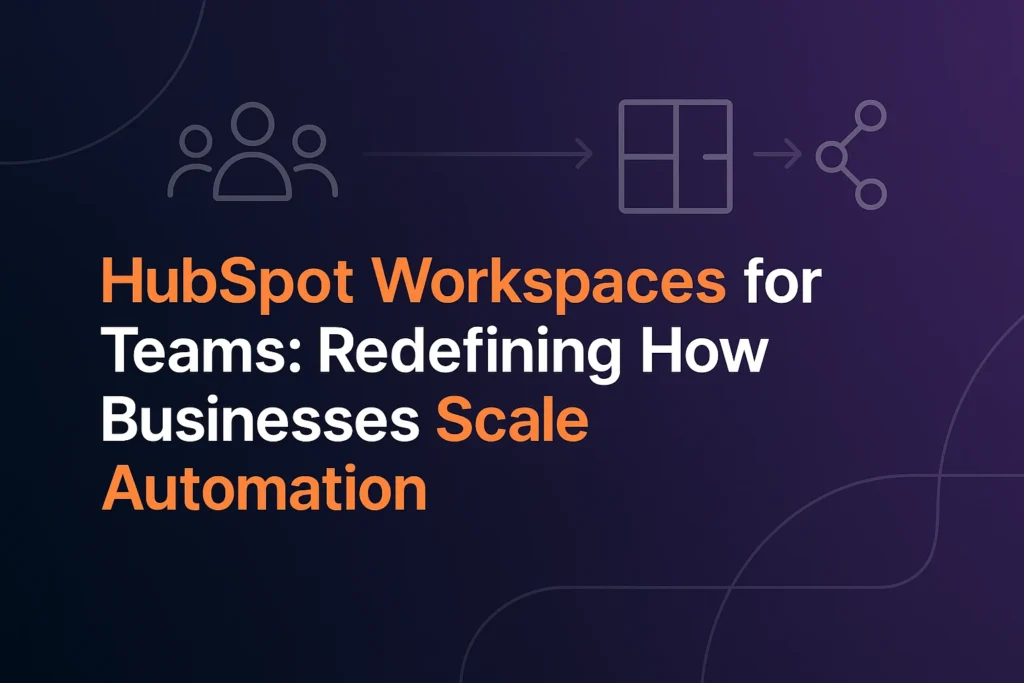
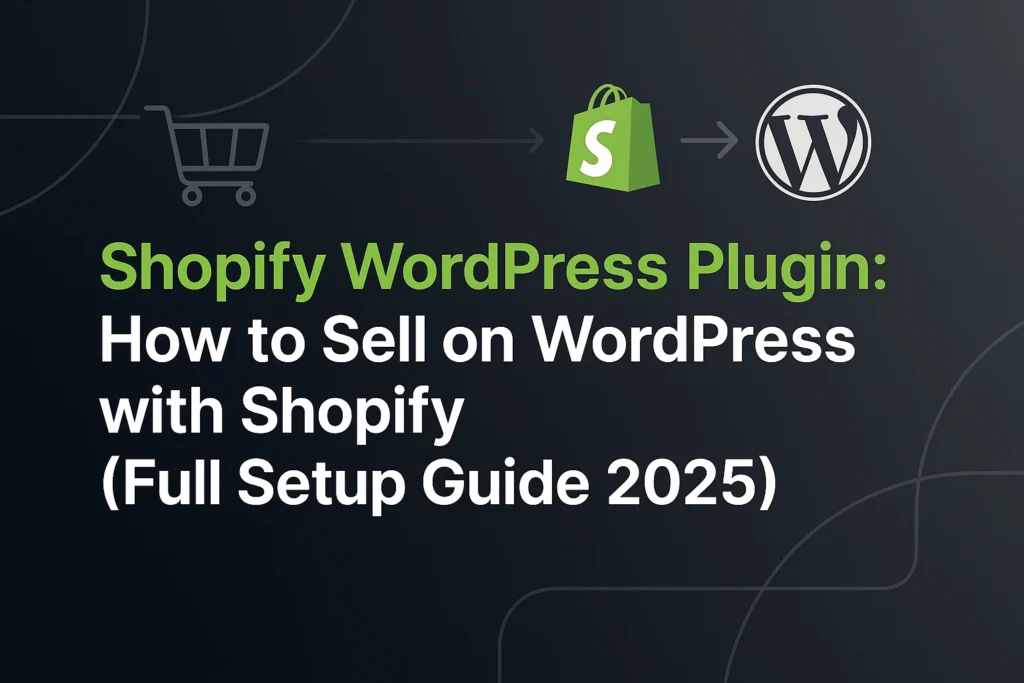
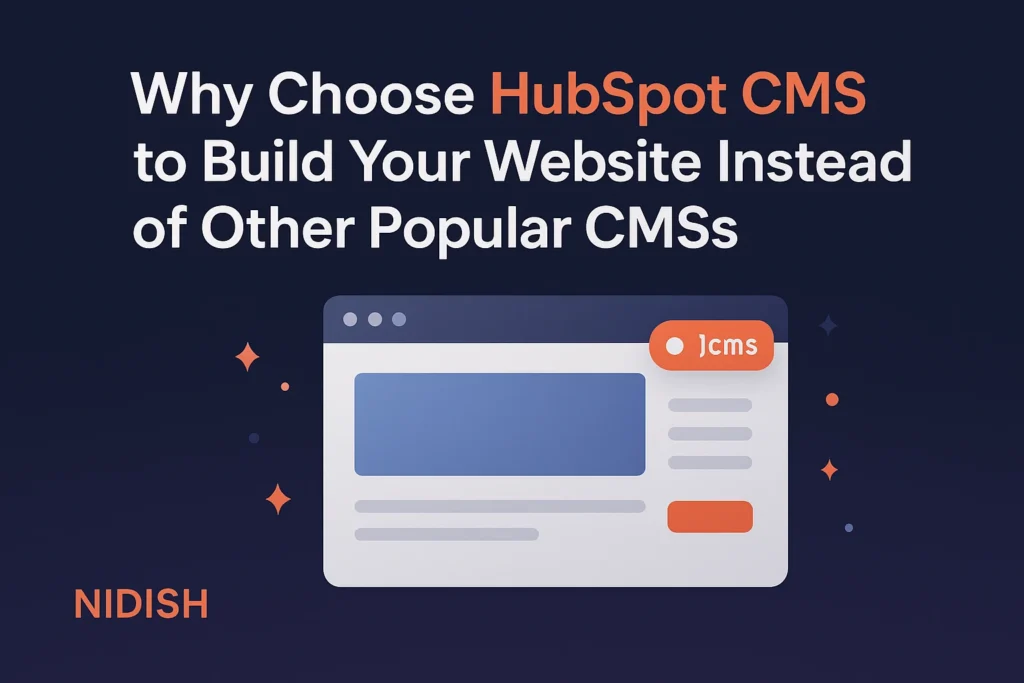
 Blog
Blog Case Studies
Case Studies Career
Career